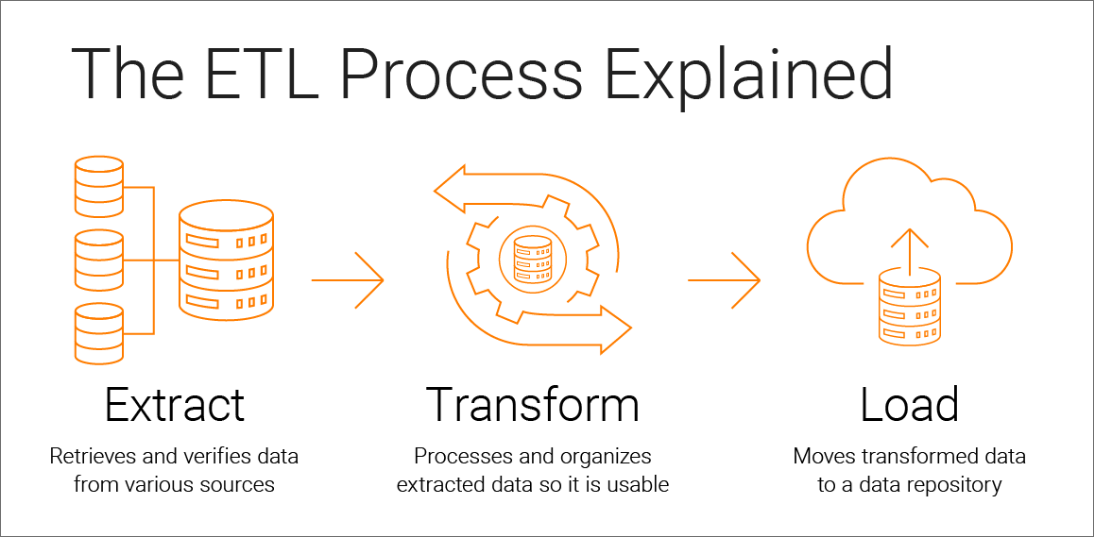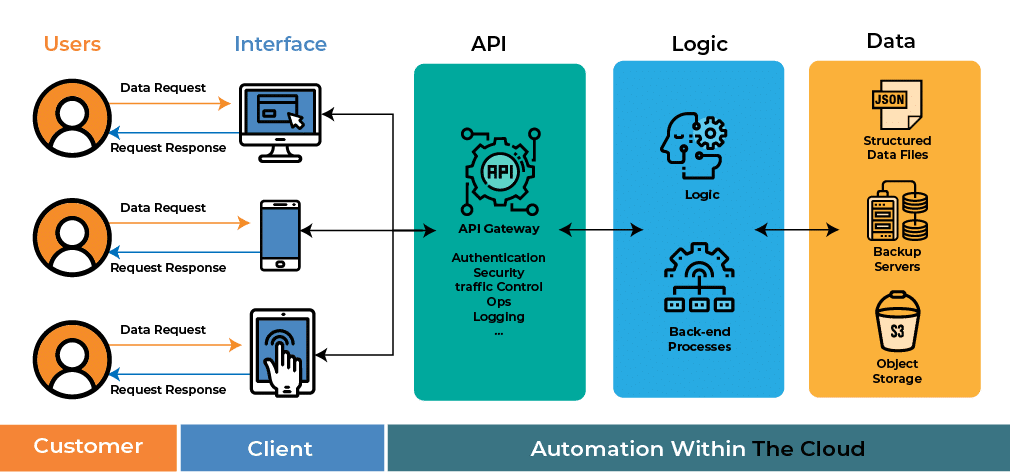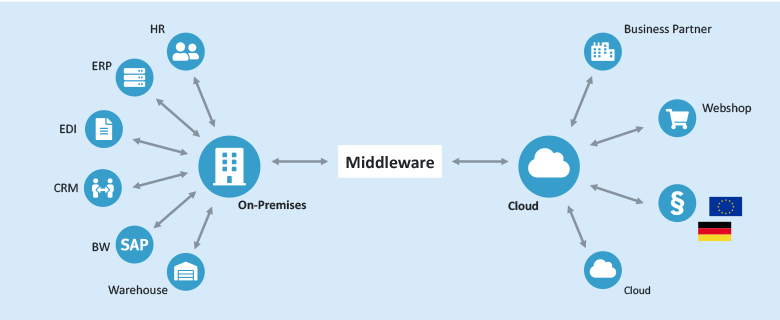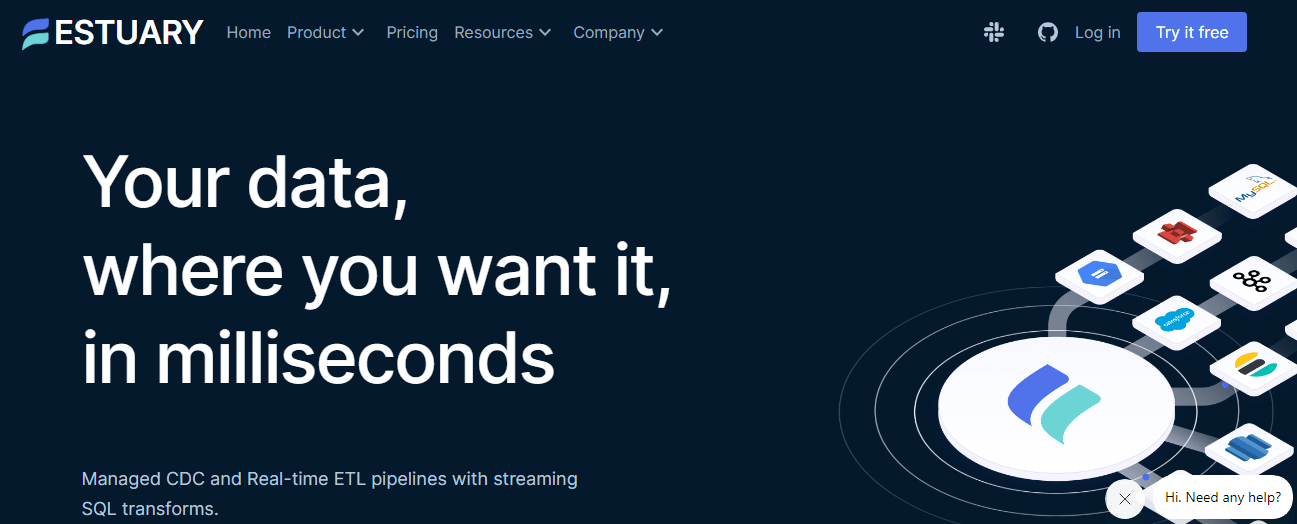
Remember the days when marketing was a mix of intuition and vague trends? Today, marketing is all about bull's-eye precision, tailor-made personalization, and agility. Powering this transformation is marketing data integration that combines data – from social media interactions and customer transactions to website visits and email responses – to provide insights for a better understanding of your audience.
The importance of data integration is becoming more and more evident in marketing. With 63% of marketers increasing their spending in data-driven marketing, you can't really downplay its importance. The key here is to fully blend this data-driven approach into your marketing strategies and that means getting a good handle on how to integrate data coming from different sources to make the most out of it.
To help you master the concept, here’s what we’ll cover in this comprehensive guide:
- The basics of marketing data integration and its different types
- Examples to explain the concept in more detail
- Challenges that come with marketing data integration and strategies to overcome them
What Is Marketing Data Integration?
Marketing data integration is about collecting marketing data from different sources and putting it all together for a cohesive and consistent view. Consolidating various marketing data fragments gives you a better idea of their overall performance and how marketing contributes to your success.
Marketing data lays the basis for any strong marketing strategy. It gives us insight into customer demographics, lead origins, resonant content, and the average duration of sales cycles. Since marketers use different data tools, like email marketing solutions and CRM systems, it's pretty clear that consolidating this data is highly important.
With the rise of digital platforms, marketers have to deal with vast amounts of data coming from all directions. But here's the catch: all that data is only helpful if you can easily get to it in one place. Integrated data makes it a whole lot easier to figure out the effectiveness of various marketing strategies, channels, and target audiences. This gives businesses the power to make smart choices and boost their overall game plan.
During marketing data integration, the information is gathered from different platforms and tools that:
- Track website analytics
- Oversee advertising efforts
- Manage customer relationships
- Streamline enterprise resources
- Monitor social media interactions
- Manage email marketing campaigns
When we integrate these data points, we get a wide-angle view of how our marketing is shaping up.
5 Proven Benefits Of Marketing Data Integration
Here’s how marketing data integration helps businesses in their marketing efforts.
- Time Efficiency: Manual data shuffling is a thing of the past. Integration automates the process. Your team isn't stuck piecing together reports; they're focused on analyzing insights and brainstorming creative strategies.
- Accurate Decision-Making: Marketing data integration swaps gut feelings for data-backed decisions. It ensures your decisions are grounded in real-time, accurate information from all corners of your marketing campaigns.
- Real-Time Agility: The marketing world is fast-paced – trends come and go quicker than you can say "viral". Integration equips you to adapt swiftly. You see trends forming in real time which lets you tweak your strategies on the fly.
- Cost Savings: Marketing data integration prevents wasting resources on redundant tools or duplicate efforts. It streamlines your tech stack and reduces unnecessary expenses. You're investing in better campaigns and customer engagement.
- Enhanced Targeting: Marketing data integration gets you close to reading your customers’ minds. It helps you segment your audience better and send the right message to the right people at the right time for better conversions.
- Holistic Insights: Integration puts marketing data together to create a complete picture. Suddenly, you see how your social media ads impact website traffic and how that affects sales. It's like gaining a sixth sense of understanding your customer journey.
- Seamless Customer Experience: Think about your customers – they don't see your marketing efforts in silos. Integrated marketing data lets you deliver a seamless experience. From personalized emails to tailored ads, you're giving them a consistent journey.
Types Of Marketing Data Integration: Which One Is Best For Your Business?
As your business grows, the choice of data integration method becomes crucial to the success of your marketing campaigns. Now, let's look at some of the common methods used for data integration. These are the techniques that many businesses rely on to bring different data sources together and make sense of it all.
ETL (Extract, Transform, Load)
ETL is a process where data is extracted from multiple sources, transformed into a uniform format, and then loaded into a designated system. This approach helps when customer data needs cleansing and transformation before being loaded into the target system. ETL provides quick implementation and can efficiently handle complex data transformations.
ELT (Extract, Load, Transform)
ELT differs from ETL in the order of operations. In ELT, data is first extracted, directly loaded into the system, and then transformed within the destination itself. ELT is particularly effective for scenarios where you need to quickly load vast data volumes into a destination system without prior cleaning or transformation.
Change Data Capture (CDC)
CDC monitors and logs changes happening within the source system. It is mainly used for tracking changes in large source systems like databases and replicating them in the destination system.
API Data Integration
API data integration helps in seamless communication between different digital tools. Applications like CRMs, eCommerce platforms, and marketing automation systems use APIs to easily sync and share data in real time.
This method not only enhances operational efficiency and data consistency but also makes marketing data integration strategies more informed and effective. Take the case of linking Shopify's marketing info with Mailchimp – it's a great example of how data can flow seamlessly between sales and email marketing platforms.
Virtualization & Data Federation
Data virtualization creates a virtual representation of data from multiple sources through an abstraction layer. This gives a unified view without physically relocating the data. It's an advanced form of data federation which also provides a combined view but the data needs to be integrated physically into the destination system.
Middleware Integration
Middleware integration tools act as the bridge between different applications for a continuous flow of marketing data. For instance, integrating a CRM like Salesforce with an ERP system like NetSuite helps marketing teams act swiftly.
When a customer's data changes in Salesforce, middleware checks NetSuite. If the customer exists, it updates their details; if not, it adds the customer. This ensures the marketing team always has up-to-date information which is crucial for targeted campaigns and client relations.
With middleware integration, data remains consistent across platforms which helps in decision-making and streamlined operations.
Propagation Integration
Propagation ensures that modifications in customer data in one system get accurately reflected across all other systems that access that data. It pushes updates from one system to all connected entities and keeps them in sync.
Streaming Data Integration
This method involves the continuous integration of various data streams into data stores and analytics systems in real-time, ensuring that the latest data is always accessible for analytics and decision-making.
Marketing Data Integration Examples For Real-World Scenarios
Here are some prime examples of how marketing data integration can be applied in real-world scenarios.
Integration Of CRM With Email Marketing Platforms
Combining CRM systems with email marketing platforms streamlines audience segmentation and personalizes campaigns. This creates an environment where marketers can create emails that truly resonate with their target audience.This creates an environment where marketers can create emails that truly resonate with their target audience. By taking advantage of these integrations and understanding and analyzing DMARC reports, companies will seamlessly take their email marketing to a new level.
Example
A brand using Salesforce as its CRM can integrate data with Mailchimp. This lets the brand send tailored promotional emails to its customers based on their purchase history, enhancing customer engagement and loyalty.
Combining Web Analytics With Ad Platforms
The combination of web analytics tools and advertising platforms creates a feedback loop for marketers. This integration helps optimize their advertising campaigns in real-time based on tangible user behaviors.
Example
A company is using both Google Analytics and Facebook Ads at the same time. When they consolidate data, they can figure out which Facebook ads are bringing in the most visitors to their website and getting people to take actions like making purchases or signing up. This helps them allocate their ad budgets more smartly.
Social Media Platforms & Marketing Automation Tools
Integrating social media with marketing automation tools can improve a brand's social reach. This ensures that marketing efforts on social platforms are both strategic and measurable.
Example
A business integrates its Twitter data with HubSpot. This integration provides insights into which tweets generate the most leads or website visits and helps the business refine its Twitter marketing strategy.
eCommerce Platforms In Sync With Inventory Systems
Linking eCommerce platforms with inventory systems allows sales data to operate in harmony. When a customer clicks "buy," your inventory system immediately updates to reflect the real-time availability. No more false promises or frustrated customers.
Example
An online retailer integrates its Shopify store with an inventory management system. This not only avoids stock-out situations but also gives them insights. The retailer can track which products are flying off the virtual shelves and which ones need a little push. This helps them make informed decisions about discounts, promotions, and marketing strategies.
Integration Of CMS With SEO Tools
When CMS platforms are paired with SEO tools, content optimization becomes more dynamic. Marketers can evaluate content and marketing performance and adjust strategies based on real-time data.
Example
A content-centric website uses WordPress and integrates it with SEMrush. It provides valuable insights into how their content is performing in search engine rankings. They can easily track key metrics like organic traffic, click-through rates, and bounce rates right from your CMS dashboard. This combination also helps the site to identify high-performing blog topics and optimize them for targeted keywords.
Feedback Tools & Product Development Systems
Linking customer feedback platforms with product management systems results in user-centric product evolution. The integration lets you infuse customer feedback directly into your product development process. You're essentially creating products that align with what your customers truly want and need.
Example
A tech startup integrates user feedback from UserVoice with its product roadmap on Trello. When a user submits an idea or a feature request, UserVoice triggers the API, which then sends the relevant information to your Trello board.
The startup achieves a seamless feedback-to-development cycle. Users feel heard as their ideas turn into tangible features. The integration ensures that the real user needs influence the product roadmap, making the app more customer-centric.
The Challenges Of Marketing Data Integration
When advertising agencies try to integrate marketing and sales data, they face various challenges. Overcoming these challenges is key to making sure data integration helps the agency rather than slows it down.
Data Quality Dilemma
Integrating marketing data means bringing together information from various sources, each with its own quirks. You might have different data formats, inconsistent naming conventions, and missing fields. This can cause data inaccuracies, which in turn, can throw off your analysis and decision-making. Ensuring that the data is accurate, complete, and standardized across the board becomes a high priority.
Compatibility Complexities
Your CRM might speak Excel fluently while your analytics tool prefers CSV. When you're integrating data from these diverse platforms, ensuring they can understand each other can be difficult. Compatibility issues can cause data to get lost in translation and the result? Garbled insights and confused analysts. The challenge here lies in finding common ground or using translation tools to bridge these gaps seamlessly.
Data Security & Privacy Predicaments
Imagine merging sensitive customer information from different sources. The security alarm bells start ringing and for good reason. Unauthorized access, breaches, or leaks can cause legal troubles and erode customer trust. Overcoming this challenge involves robust encryption, access controls, and compliance with data protection regulations.
Maintenance Issues
Keeping your marketing data integration setup running smoothly requires constant attention. Updates, changes in systems, and new tools joining your tech ensemble can cause hiccups. Make sure that your marketing data integration solution is agile so that it can easily roll with the punches of these changes.
Diverse Data Sources Dilemma
Imagine gathering data from different platforms – your CRM, email marketing tool, social media channels, and more. Each source speaks its own language and might have data organized in unique ways. Integrating all this diversity into a cohesive dataset is not easy.
The challenge is not just to make them understand each other but also to ensure that they collaborate harmoniously to provide a comprehensive view of your marketing campaigns.
Timing & Latency Troubles
Data from one source is updated every hour while another source gets new data in real time. Integrating these sources means dealing with data arriving at different intervals. The challenge here is to ensure that the integrated data reflects the most recent and accurate information. Data arriving late can cause outdated insights and flawed decision-making.
Change Management Challenge
Introducing a new integration setup is exciting but can be met with resistance. Your team might be accustomed to the old ways and hesitant about the new setup. Educating them, managing their concerns, and helping them embrace the change is easier said than done. Navigating this challenge requires clear communication, training, and highlighting the benefits of the new system.
How To Overcome Data Marketing Integration Hurdles: 7 Best Practices
When it comes to tackling challenges, a strategic and targeted approach can make a difference and enhance the quality and reliability of integrated data. Here's how agencies can handle these hurdles:
Crafting A Solid Data Integration Plan
An effective marketing data integration strategy outlines the objectives, goals, and methodologies for integrating data from different sources. Pinpoint data sources, lay down quality standards, and identify necessary marketing data integration tools to create a clear roadmap for successful integration.
Unifying Data Repositories
To sidestep the issue of data fragmentation, agencies should merge data sources into a central hub like a data warehouse or data lake. This unified approach improves data quality and streamlines the data integration process while avoiding data silos.
Embracing Data Standardization
To ensure cohesive data integration, agencies should adopt standardized data formats. Using data transformation tools play a key role in converting different types of data into a single, consistent format, while also dealing with differences in how the data is structured and categorized.
Investing In Contemporary Data Solutions
Old-fashioned legacy systems can make it challenging to smoothly integrate marketing data. But if agencies invest in modern data techs like cloud platforms and useful API capabilities, they can tap into features that make integration easy.
Upholding Data Integrity
To make data integration count, the integrated data needs to be trustworthy. This means agencies have to implement strict data quality measures, like data profiling and cleansing, to ensure data accuracy and consistency.
Acquiring Expertise Through Training & Hiring
Pulling off successful marketing data integration is all about having a skilled team on board. Agencies should make sure their teams have the right skills, either by providing training or by hiring professionals who really know their stuff when it comes to data integration and governance.
Adhering To Data Privacy Protocols
As privacy laws are getting tougher, agencies need to be extra careful about their data integration practices. Ensuring encryption, implementing strict access controls, and regularly reviewing privacy policies are important moves. These steps help agencies stay compliant and protect sensitive customer information.
The Role Of Estuary Flow In Marketing Data Integration
Through Estuary, setting up marketing data integration solutions is easy. Our platform offers scalability and efficiency that align with your needs. The best part is you won't have to write any code. Our no-code DataOps platform, Flow, tackles the demands of modern data integration systems head-on with a user-friendly and streamlined approach.
Instantaneous Data Retrieval
Estuary Flow's robust platform lets you capture data in real-time from a range of sources, including databases and varied SaaS platforms. It gives marketing professionals immediate access to data so they can derive real-time insights for quick decision-making and timely interventions in marketing campaigns.
Streamlined Data Transformation
Considering the diverse data pouring in from various marketing channels, having a unified format is necessary for effective analysis. Flow brings a whole new dynamic with its special feature that offers real-time SQL and Javascript transformations.
This feature effortlessly brings together different marketing data and consolidates it into a uniform structure to set the stage for thorough analysis and strategic formulation.
Managing High Data Volumes
The sheer volume of data that contemporary marketing campaigns generate can be overwhelming. But Flow steps up to the plate, skillfully managing data processing even when there's a sudden surge that reaches speeds of 7 GB/s. This strong capability ensures that data processing remains seamless and effective as marketing efforts continue to grow.
Data Access & Security
With Flow, you can establish user roles and permissions to make sure only the right people can access sensitive information. It also locks down your data with powerful encryption so there's no need to stress about it getting into the wrong hands.
Adaptability & Dependability
Estuary's flexibility shines through its open protocol which makes it easy to add new connectors. Paired with features like cross-region support and the assurance of "exactly-once" semantics, Estuary emphasizes its dedication to reliability. This means your marketing data streams remain consistent and uninterrupted.
Conclusion
The battle for consumer attention continues to grow strong and the recipe to winning it is using the power of marketing data integration. When you integrate all sorts of different data sources and make them work together seamlessly, you can create an amazing experience for customers that hits home and results in incredible growth.
However, this landscape is not without its thorns. From the complexities of data silos to ever-evolving technologies – it's no easy journey. But having an effective data integration tool by your side can ease this journey for you.
If you're on the lookout for a platform that can address your marketing data integration needs without getting too technical, Estuary Flow is the answer. With Flow, integrate multiple marketing sources with ease, navigate through challenges, and make the most of your marketing campaigns.
Get started with Estuary Flow for free or contact our team for a tailored solution.

About the author
With over 15 years in data engineering, a seasoned expert in driving growth for early-stage data companies, focusing on strategies that attract customers and users. Extensive writing provides insights to help companies scale efficiently and effectively in an evolving data landscape.
Popular Articles















